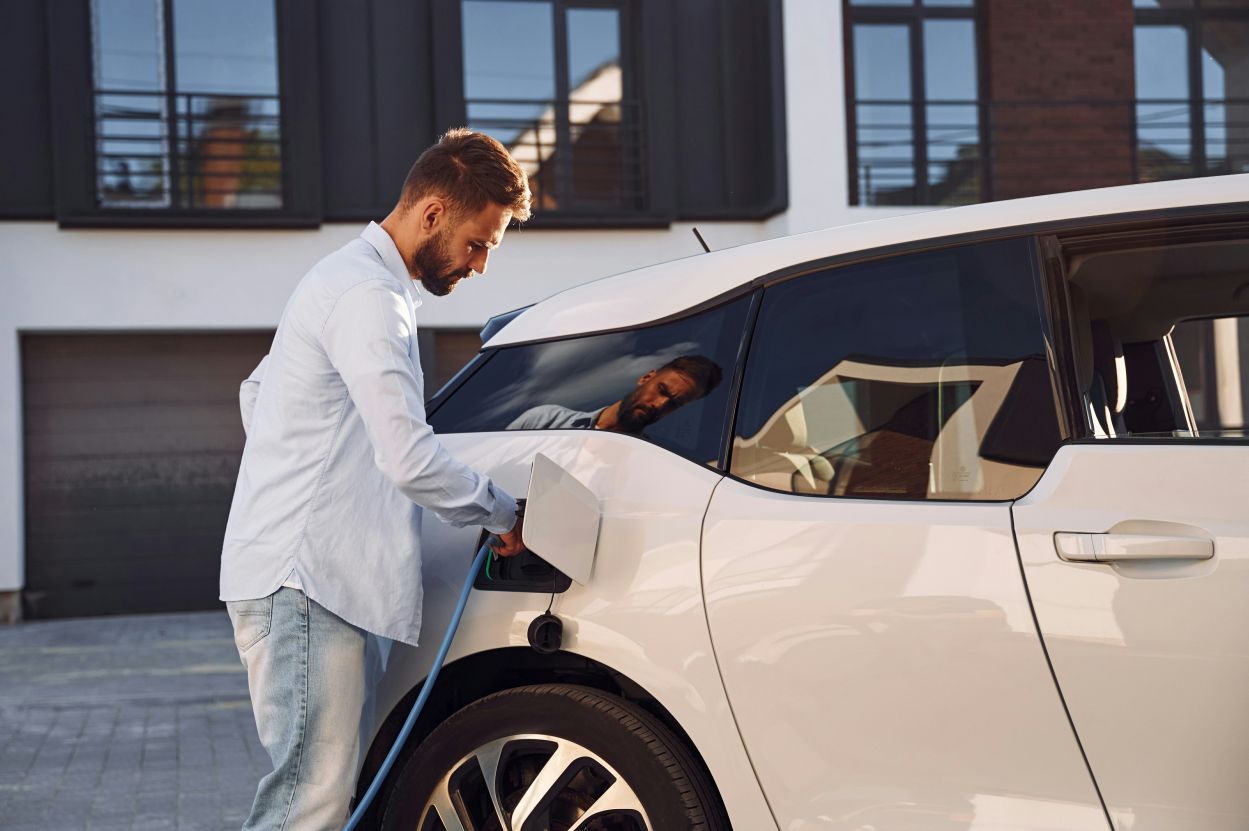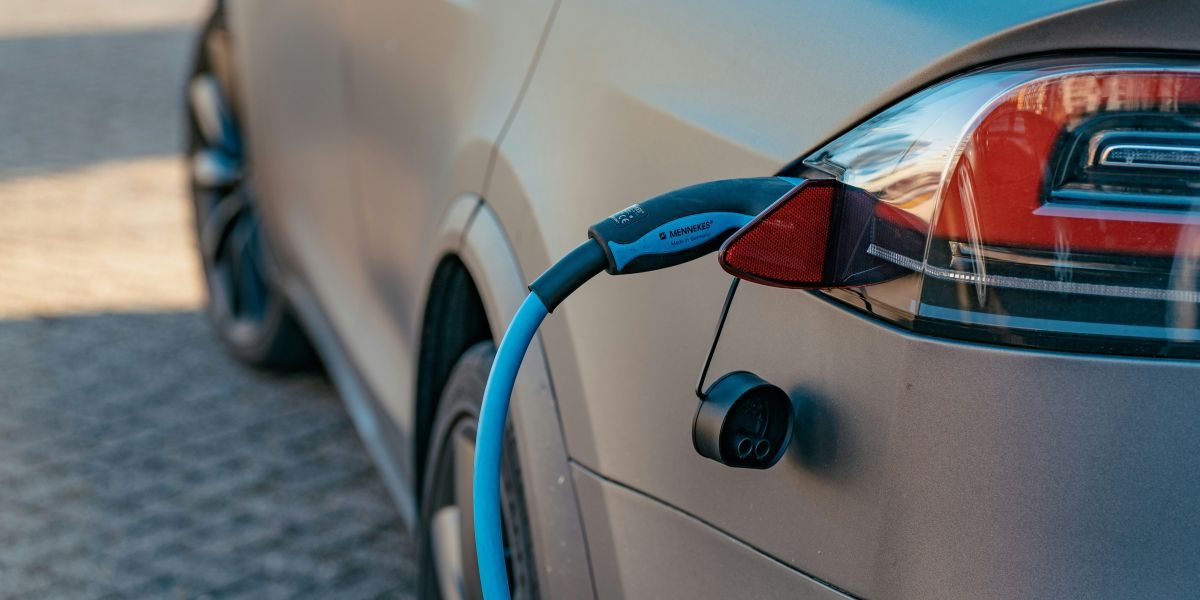Electric cars are becoming increasingly visible on the streets, and while the environmental benefits are often highlighted, the role of creative product design is also contributing to their growing appeal. From aerodynamic bodies that help improve efficiency to tech-savvy and comfortable interiors, design is playing a significant part in the way consumers engage with and adopt EVs. Innovative design choices are shaping the way these vehicles are perceived, making them more appealing for those considering an eco-friendly yet functional mode of transport.
All the curves, screens, and features are not just about aesthetics; they also have a practical impact on efficiency, usability, and eco-friendliness. In this post, we explore how design has influenced the emergence of electric vehicles, where thoughtful decisions are contributing to user satisfaction and the broader adoption of these cars.
The Growth of EVs
Electric vehicle sales in the UK have been steadily increasing. The 381,970 new full-electric vehicles sold in 2024 marked a notable rise, accounting for about 19.6 percent of all new cars registered that year. This was a 21.4% increase over 2023, showcasing the ongoing momentum in the market for electric vehicles.
In September 2025, a record high of 72,779 battery electric cars were sold, which was nearly 30% higher than the previous year. This growth suggests that EVs are becoming a more popular choice among UK consumers, aided by government policies and a wider range of model options.
Key Design Innovations Driving EV Popularity
Fast Charging
Batteries get charged not in hours, but in minutes with new charging systems. This will save time, simplify road trips, and help a product design agency design EVs that inspire more individuals to switch confidently.
Lightweight Frames
Designers are using lightweight yet strong materials such as aluminum and carbon fiber. These materials help reduce the vehicle’s weight, increase speed, and extend driving range—while still maintaining safety and comfort.
Smart Displays
Modern EV dashboards feature smart displays with maps, touchscreens, and driving data. These designs aim to keep drivers informed, entertained, and in control with simple, intuitive controls.
Eco Interiors
Many EVs are now made with sustainable materials, such as recycled or natural materials for seats and panels. This eco-conscious design trend helps blend comfort with environmental responsibility, aligning with consumers’ growing interest in sustainability.
Bold Aesthetics
Contemporary EVs feature sleek, eye-catching designs with sharp lines and bold features. This futuristic look appeals to a younger generation of buyers, making electric vehicles feel distinctive and exciting, rather than just another option.
Advanced Lighting
LED headlights and dynamic taillights are not only more energy-efficient but also enhance safety and provide a modern aesthetic that makes EVs stand out on the road.
Adaptive Controls
Adjustable steering wheel systems and touchless buttons allow drivers to tailor their driving experience to their preferences, offering both comfort and safety in a user-friendly manner.
Connected Systems
EVs are becoming more connected with smartphones and app integration. Drivers can monitor battery status, pre-cool the cabin, or locate charging stations at the touch of a button, enhancing convenience and ease of use.
How Design Influences Consumer Choice

Visual Appeal
A well-designed vehicle naturally draws attention, which is why many consumers are first attracted to a product by its visual appeal. A strong design can spark curiosity, build confidence, and create a connection with buyers in just a few seconds.
Colour Psychology
Colors have a powerful effect on mood and emotion. Lighter colors are often associated with energy and excitement, while neutral tones can invoke a sense of calm and stability. This can influence consumer preferences, helping brands align with the expectations of their audience.
Shape Influence
The shape of a product also plays a role in shaping consumer perception. Rounder shapes are often perceived as friendly and approachable, while sharp angles may convey professionalism and precision—important factors in influencing purchasing decisions.
Texture Feel
The texture of a product adds to its sensory experience. Smooth, soft surfaces are often linked to luxury and comfort, while matte or rough textures can suggest authenticity and a natural feel, appealing to different consumer preferences.
Brand Consistency
Consistency in design fosters trust and recognition. By keeping logos, fonts, and colors consistent, brands help to establish long-term loyalty and repeat purchasing behavior, as customers are able to recall the brand more easily.
Functionality Focus
A product may look stunning, but if it fails to deliver on performance, consumers are likely to lose interest quickly. An intelligent design strikes a balance between aesthetics and functionality, helping customers to experience both style and substance.
Packaging Impact
The first experience a consumer has with a product is often its packaging. High-quality, thoughtful packaging not only presents the product well but also makes it stand out in a competitive market.
Emotional Connection
Product design can also evoke emotions, whether it’s nostalgia, joy, or reassurance. When consumers feel connected to a product’s look and feel, they are more likely to form a lasting relationship with the brand, which may encourage repeat purchases.
Summary
Creative product design has become a key driver in the rise of electric vehicles. By enhancing efficiency, usability, and emotional attachment, innovative design continues to shape how people experience and engage with electric mobility, making it an attractive option for many.
















